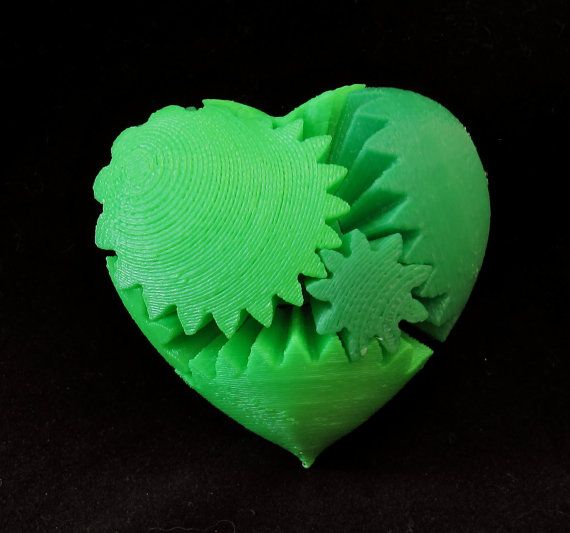Bottom up 3d printer
What is 3D Resin Printing
What is 3D Resin Printing?
Stereolithography (SLA), Digital Light Processing (DLP), and Liquid Crystal Display (LCD) are 3 different types of 3D Resin Printing processes. In these vat polymerization methods, light sources are used to cure liquid resin, layer-by-layer, to form a desired 3D model. Although SLA, DLP, and LCD all use a light source, a build platform, and a vat of resin, each process uses a different type of light source.
Looking for Instant 3D Resin Printing Quotes?
Get Instant 3D Resin Printing Quotes
Learn more about our Custom 3D Printing Services.
Bottom-up 3D resin printer showing build platform and resin vat.
SLA 3D Resin Printing
SLA, the original form of 3D Printing, was patented in 1986. In this technique, galvo mirrors focus an ultraviolet (UV) laser that solidifies the cross-section of each layer, point-by-point. In general, SLA 3D Printing may be top-down, as is used in some industrial applications, or bottom-up, as is used for desktop printers.
In top-down SLA 3D Printing, the laser source is positioned above the vat of resin. The build platform begins at a predetermined layer height under the top surface of the liquid resin. After solidifying a layer, the build platform drops by a specified layer height, typically between 25-100 microns, to solidify the next layer and merge it with the previous. This process repeats until the model is complete, at which point it rises from the vat. Unlike other 3D Printing methods, curing continues after completion. Extra exposure to UV light is generally needed to fully cure the resin and improve the model’s hardness and temperature resistance.
In bottom-up SLA 3D Printing, the light source is positioned under the vat and the model is formed upside down. The build platform begins at a predetermined layer height above the tank’s bottom surface, which is transparent to allow light to penetrate the liquid resin. After each layer is solidified, the build platform rises, removing the cured resin from the bottom of the tank in a process called “peeling. ” Forces applied to the model during peeling are the main cause of print failures in bottom-up SLA 3D Printing.
” Forces applied to the model during peeling are the main cause of print failures in bottom-up SLA 3D Printing.
DLP 3D Resin Printing
DLP is similar to bottom-up SLA 3D Printing in that the light source is positioned below the vat of resin. However, instead of a using a UV laser, DLP uses a projector screen to flash a pixelated 2D image of the layer onto the tank bottom. This allows for faster processing times. The disadvantage of DLP is the restriction of build accuracy, which is determined by pixel size.
LCD 3D Resin Printing
LCD is similar to DLP in that it also uses a pixelated 2D image. You may recognise the term LCD from computer monitors and other display devices. In LCD 3D Printing, an array of UV LCDs shine the entire layer image directly onto the tank bottom to cure the liquid resin. As no mirrors are used to project each layer image, there is no distortion of the light. This means that the quality of LCD 3D Printing is determined by the LCD density. LCD generally uses cheaper components than both SLA and DLP, which is often a good introduction to Resin 3D Printing for the first-time owner.
LCD generally uses cheaper components than both SLA and DLP, which is often a good introduction to Resin 3D Printing for the first-time owner.
With 3D Resin Printing, high levels of accuracy can be achieved with smooth surfaces. As the UV curing method tends to leave models brittle, most 3D Resin Printing is better suited for non-functional parts and visual models. But, as material science continues to develop, functional resin printed parts are now becoming a reality. Visit the 3D Printing comparison page for more information about the ideal 3D Printing method for your next project.
About the author:
Chris Brennan is a Manufacturing Engineer and the founder/owner of Thirteen Design Consultancy based out of County Louth, Ireland.
[email protected]
Instagram: @thirteendesignconsultancy
Facebook: @thirteendesignconsultancy
Twitter: @13DesignIreland
Prototype Hubs Profile: Thirteen Design Consultancy
Share This Post
Related Articles
Carima DM400A, world’s first XXL top-down DLP 3D printer
Home › Insights › Carima DM400A, world’s first XXL, top-down DLP 3D printer
Carima is Korea’s leading DLP 3D printer manufacturer and has been working with the technology for over 20 years. They develop turnkey resin 3D printing solutions for professional and industrial use in numerous sectors, though they are specialized in the dental industry.
They develop turnkey resin 3D printing solutions for professional and industrial use in numerous sectors, though they are specialized in the dental industry.
Table of contents
Top-down DLP resin 3D printing vs. bottom-up printing
Advantages of top-down resin 3D printers
Large resin prints require an XXL-sized curing machine
Carima partners with Adaptive3D for wider choice of resins
Carima’s DM400A uses top-down DLP technology, which offers significant advantages over the more common bottom-up printer setup.
But first, what is DLP 3D printing? DLP stands for Digital Light Processing, a technology where an optical engine lamp projects light onto a layer of resin. The light, which is projected into a specific layer’s shape thanks to a mirror system, cures entire layers at a time.
This technique is faster than laser SLA (stereolithography) all while being less expensive. There are two ways in which the projector can be configured: below the tank, or above the tank.
When below the tank, the projector’s light hits the bottom of the resin tank, which is often made up of a very thin, transparent film. The build platform starts at the very bottom of the tank and is completely immersed in the resin, moving upwards as each layer is cured.
Top-down 3D printers work in the opposite way; the projector is located above the resin tank, and the build platform moves downwards. Nothing stands in between the light and the resin, so the projector’s light hits the resin directly.
Advantages of top-down resin 3D printers
The main advantage of having the platform move downwards (with the printed object on top) is very simply linked to gravity. With bottom-up printers, prints can easily fall off the print platform – or parts of the print can break off – and splash into the resin tank. After hours of printing a large object, this frustrating type of failure wastes a lot of time and material.
Another advantage of top-down printing is that since you’re not working against gravity, you don’t need to add as many support structures. Support structures can add up to a lot of material usage and waste, and they also imply more post-processing (e.g. surface finishing to remove the marks left by the support structures).
Support structures can add up to a lot of material usage and waste, and they also imply more post-processing (e.g. surface finishing to remove the marks left by the support structures).
Last but not least, maintenance. During the resin 3D printing process, tiny bits of non-intentionally hardened resin can fall to the bottom of the tank. This means that light will be blocked in certain areas, which is why bottom-up tanks must be cleaned after each print, or why their transparent film must be changed (another time-consuming task) after several runs. Top-down 3D printers offer easier, cleaner workflows.
Overall, top-down printers enable larger, heavier prints that won’t fall off the print bed, and the smoother process is less prone to failures.
A closer look at the DM400A
The DM400A is the world’s first large, top-down DLP 3D printer with a dual 2K light engine. This high definition doubles down on resolution and makes it possible to cover a large build area of 400 x 330 x 500mm.
Its large area paired with DLP technology’s high speed means that the Carima DM400A is more than capable of handling mass production applications. An entire build plate with, for example, 57 dental pieces, can be printed in just over an hour and a half. It can also 3D print larger, heavier parts than small dental models with very slim failure rates thanks to its top-down configuration.
The printer also boasts Carima’s Precise Dual DLP Engine Alignment Technology and offers native 132-micron pixel size, for high-quality surface finishes. The DM400A features a 50°C heated chamber as well, meaning it can handle highly viscous materials of up to 6,000 cps.
| Build size | 400 x 330 x 500 mm |
| Available layer thicknesses | 50, 100, 125, 150 microns |
| Engine light source | LED UV 405 nm |
| Engine resolution | Dual 2K high UV LED 2560×1600 |
| Pixel size (XY) | 132 microns |
| Machine weight | 800 kg |
| Resin tank capacity | 220 L |
| Machine dimensions | 1050 x 1200 x 1900 mm |
Large resin prints require an XXL-sized curing machine
For post-curing, Carima provides a large-sized curing machine, CL1800, which offers a curing full base of ⌀520 x 450mm.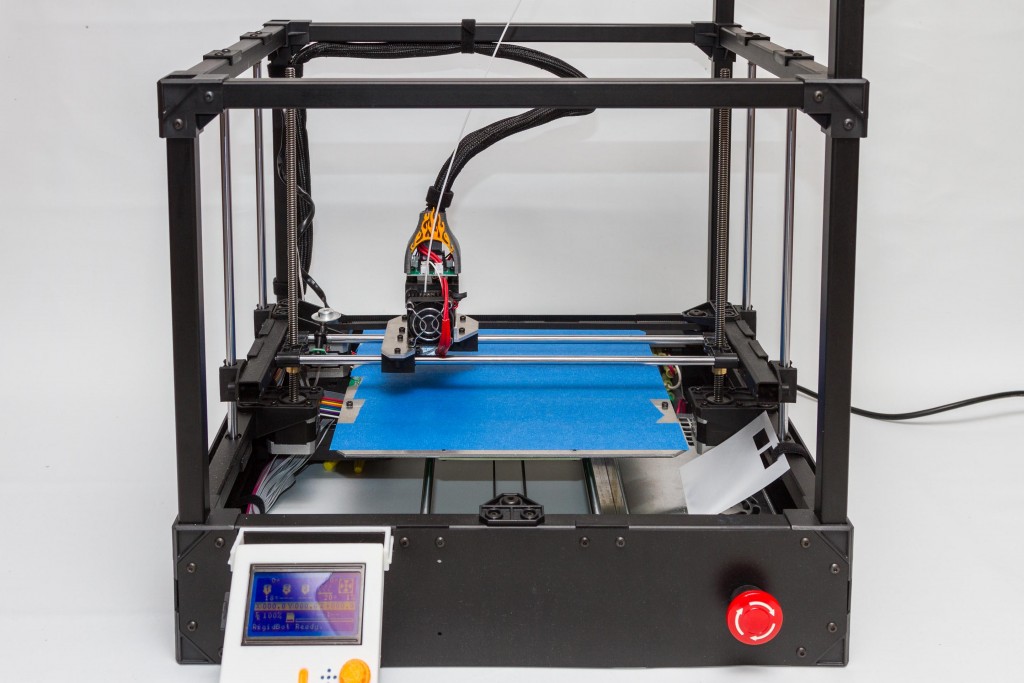 Its powerful 1800W UV LED cures large prints in approximately 10 minutes (e.g. with Elastic ToughRubber 90 standard material).
Its powerful 1800W UV LED cures large prints in approximately 10 minutes (e.g. with Elastic ToughRubber 90 standard material).
Carima partners with Adaptive3D for wider choice of resins
Adaptive3D is a leading AM polymer resin supplier. They are especially known for developing the toughest polymers on the market for additive manufacturing.
DM400A’s 6,000 cps viscosity capacity makes it possible to print Adaptive3D’s rubber-like materials, which are optimized for top-down DLP printers.
A part 3D printed with Elastic ToughRubber material.These are the different types of rubbery materials that the DM400A can 3D print:
| Material | Use cases |
|---|---|
| Elastic ToughRubber 90 | Primary: Mid-soles & heel-cups Secondary: Impact parts, recoil pads, door boots & wire guides, tough enclosures, seals |
| Soft ToughRubber | Primary: Audio earpieces Secondary: Wearable electronics, anatomical medical models, insoles |
| Elastic ToughRubber 70 | Primary: Mid-soles & heel-cups Secondary: Impact parts, recoil pads, door boots & wire guides, tough enclosures, seals |
Interested buyers in the United States can contact Adaptive3D for DM400A inquiries.
SLA Technology. How SLA 3D printing works.
Hello everyone, 3DTool is with you!
Today we will look at the basic principles of technology SLA . After reading this article, you will understand the main points of the printing process using this technology, the advantages and disadvantages of this method 3D printing .
On our website, you can find a list of 3D printers working on SLA technology, at this link: Catalog of 3D printers printing on SLA / DLP technology
Technology 3 D printing SLA
Stereolithography (SLA) is an additive manufacturing process that achieves the result by means of resin polymerization. In SLA printing, the object is created by selectively curing a polymer resin, layer by layer, using an ultraviolet (UV) laser beam. The materials used in SLA printing are photosensitive thermoset polymers that are available in liquid form.
SLA is known as the first 3D printing technology : its inventor patented this technology back in 1986 . When you need to print parts with very high precision or a smooth surface, the SLA comes to the rescue. In this case, it is the most cost-effective and efficient technology 3D printing . The best results can be achieved only if the operator of the equipment on which the printing process takes place is familiar with the technology and some of the nuances. That is, he has the necessary qualifications.
SLA shares many characteristics with Direct Light Processing (DLP ), another photopolymerization technology. For simplicity, both technologies can be considered equal.
SLA printing process
1) 2) 3)
1) A platform is placed in the tank with liquid photopolymer, at the same height from the resin surface.
2) The UV laser then selectively cures the required areas of the photopolymer resin according to a predetermined algorithm.
The laser beam is focused on a given path using a set of mirrors called galvos. Then the entire cross-sectional area of the model is illuminated. Therefore, the resulting part is completely solid.
3) When one layer is finished, the platform moves to a safe distance and the mixing foot inside the tub mixes the resin.
This process is repeated until the part is printed. After printing, the part is not fully cured and requires further post-processing under the UV lamp . At the end of UV illumination, the part acquires very high mechanical and thermal properties.
The liquid resin solidifies through a process called photopolymerization: during solidification, the monomer carbon chains that make up the liquid resin are activated by an ultraviolet laser and become solid, creating strong, inextricable bonds with each other.
The photopolymerization process is irreversible, and there is no way to convert the resulting parts back into a liquid state. When heated, they will burn, not melt. This is because the materials that are produced by SLA technology are made from thermoset polymers, as opposed to the thermoplastics that FDM uses.
Operation scheme SLA printer
Specifications SLA printer
On SLA systems, most print settings are set by the manufacturer and cannot be changed. The only inputs are the layer height and the part orientation ( last, locates the supports ).
The typical layer height in a SLA print ranges from 25 to 100 micron .
The lower the layer height, the more accurately the complex geometry of the model will be printed, but at the same time the printing time and the likelihood of failure will increase. A layer height of 100 microns is suitable for most common geometries and is the golden mean.
A layer height of 100 microns is suitable for most common geometries and is the golden mean.
Another important parameter for the operator is the size of the platform. It depends on the type of SLA printer. There are two main types: orientation top to bottom and orientation from bottom to top .
In the first case, the laser is above the tank, and the part is face up. The platform sits at the very top of the resin vat and moves down after each layer is sintered.
Schematic SLA top-down printer
In " bottom up " layout on SLA printers , the light source is placed under the resin tank (see picture above) , and the part is built upside down.
The tank has a transparent bottom with a silicone coating that allows the beam of light to pass through but prevents the cured resin from sticking. After each layer, the cured resin separates from the bottom of the tank as the platform moves up. This is called the sintering step.
This is called the sintering step.
Schematic SLA bottom-up printer
The orientation " bottom to top " is mostly used in desktop printers like Formlabs. The " top - down " orientation is used in the industrial SLA printer .
Printers SLA " bottom-up " are easier to manufacture and operate, but the size of the possible print will be smaller, since the forces applied to the part during the sintering stage can cause printing to fail.
Top-down printers, on the other hand, can print very large parts without much loss in accuracy. The wide possibilities of such systems naturally cost more.
The following are the main characteristics and differences between the two orientations:
| "Top down " | |
| Pros: | |
| lower cost | |
| Wide market availability | |
| Minuses: | |
| Small platform size | |
| Smaller range of materials | |
| Requires additional post-processing due to extensive use of supports | |
Popular brands:
FORMLABS
Printable area: Up to 145 x 145 x 175 mm
Typical layer height and print accuracy: 25 to 100 µm and ± 0.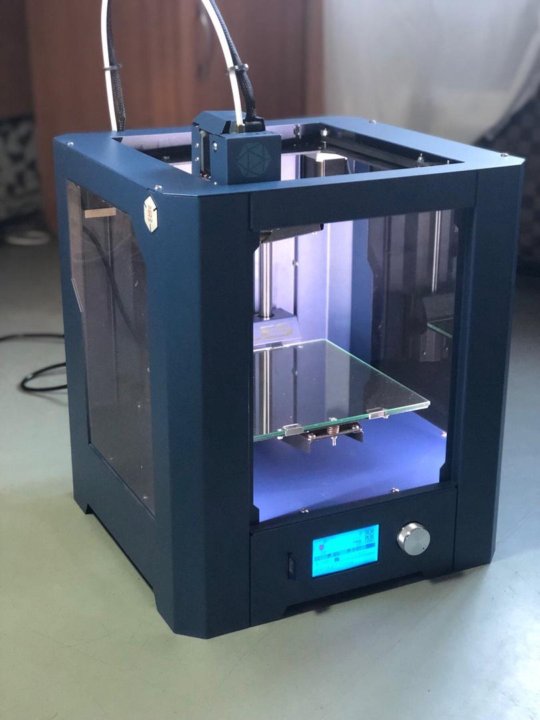 5% (lower limit: ± 0.010 to 0.250 mm) respectively
5% (lower limit: ± 0.010 to 0.250 mm) respectively
| "Upwards" | |
| Pros: | |
| Very large platform | |
| Faster Print Time | |
| Minuses: | |
| High price | |
| Qualified operator required | |
| Material change involves emptying the entire tank | |
Popular brands:
PRISMLAB
Print area size: Up to 1500 x 750 x 500 mm
Typical layer height and print accuracy: 25 to 150 µm and ± 0.15% (lower limit ± 0.010 to 0.030 mm) respectively
Support during printing 3 D
Supports are always required at Print SLA . Structural structures are printed from the same material as the part and must be manually removed after printing.
Structural structures are printed from the same material as the part and must be manually removed after printing.
Part orientation determines the location and amount of supports. It is recommended that the part be oriented so that surfaces that require maximum quality do not come into contact with supports.
In different types of SLA printers, support is used in different ways:
For top - down printers , support requirements are the same as FDM . They are essential for accurate printing of overhangs and bridges ( the critical overhang angle is typically 30 degrees ).
The part can be oriented in any position and is usually printed flat to minimize the number of supports and the total number of layers.
In printers like " from bottom to top " everything is more complicated. Overhangs and bridges also need to be supported, but minimizing the cross-sectional area of each layer is the most important criterion.
Forces applied to the part during the sintering step can cause it to come off the platform. These forces are proportional to the cross-sectional area of each layer.
For this reason, the parts must be oriented at an angle, and minimizing supports here is not a primary concern.
On the left - a detail oriented on the SLA printer "from top to bottom" (support minimization).
On the right is a part oriented on the SLA printer "from the bottom up" (minimizing the cross-sectional area).
Removing supports for an SLA printed part
Curl
One of the biggest problems with the accuracy of parts made with SLA is curling. This problem is similar to the deformation in FDM when materials shrink.
During curing, the resin shrinks slightly when exposed to the printer's light source. When shrinkage is significant, large internal stresses develop between the new layer and the previously cured material, causing the part to twist.
Adhesion (sintering) between layers
SLA printed parts have isotropic mechanical properties. This is due to the fact that one pass UV beam is not enough to completely cure the liquid resin.
Further passes help the previously hardened layers to fuse together. In fact, in the SLA of printing, curing continues even after the printing process is completed.
To achieve the best mechanical properties, parts printed using this technology should be post-cured by placing them in a chamber under intense ultraviolet radiation ( and sometimes at elevated temperatures ).
This greatly increases the hardness and heat resistance of SLA , but does not make it stronger. Rather the opposite.
For example.
Test specimens printed with standard clear resin on a SLA desktop printer have almost 2 times tensile strength after curing ( 65 MPa compared to 38 MPa).
Can operate under load at higher temperatures ( 58 degrees Celsius, compared with 42 degrees ), but their elongation at break is half as much ( 6.2% compared to 12% ).
If you leave the part in the sun, then nothing good will come of it.
Prolonged exposure to ultraviolet radiation has a detrimental effect on physical properties and appearance. The part may curl, become very brittle, and change color.
For this reason, before using the part, it is recommended to apply a spray of transparent acrylic paint resistant to UV .
SLA media
SLA Printing Materials is available in the form of a liquid resin. The price per liter of resin varies greatly - ranges from $50 for standard material to $400 for specialty materials such as casting or dental resin.
Industrial systems offer a wider range of materials than desktop systems SLA printers, which give the designer more control over the mechanical properties of the printed part.
SLA materials ( thermosets ) are more brittle than materials made using FDM or SLS ( thermoplastics ) and for this reason SLA parts are not typically used for functional prototypes that will be subjected to significant stress. However, new advances in materials development may change this in the near future.
The following table lists the advantages and disadvantages of the most commonly used resins:
| Material | Features |
| Standard resin | + Smooth surface Relatively fragile part |
| transparent resin | + Transparent material - Requires post-processing for Presentable appearance |
| casting resin | + Used to create mold templates + Low ash after burnout |
| Rigid or durable resin | + ABS-like or PP-like mechanical properties - Low thermal resistance |
| High temperature resin | + High temperature resistance + Used for injection molding · - High price |
| dental resin | + Biocompatible + High abrasion resistance · - High price |
| Rubber-like resin | + Rubber-like material - Poor printing accuracy |
Post-processing SLA 3D printing
Parts printed with SLA technology can be processed to a high quality using various methods such as sanding and polishing, staining and mineral oil treatment. Widely developed articles about post-processing can be found on the Internet.
Widely developed articles about post-processing can be found on the Internet.
Transparent resin housing cover for electronics in various finishes. From left to right: removal of the main support, wet sanding, UV irradiation, acrylic and polishing
Advantages and disadvantages of SLA
Pros:
-
SLA 3D printers can produce parts with very high dimensional accuracy and complex geometries.
-
The parts will have a very smooth surface, making them ideal for visual prototypes, for example.
-
Special materials are available such as clear, flexible and cast resins.
Cons:
-
Parts printed using SLA technology tend to be fragile and not suitable for functional prototypes.
-
The mechanical properties and appearance of these parts deteriorate over time.
 They are adversely affected by exposure to sunlight.
They are adversely affected by exposure to sunlight. -
Supports and post-processing when printing are always required.
The main characteristics of the SLA are shown in the table:
materials
Photopolymer resins (thermosetting
materials)
Dimensional accuracy
± 0.5% (lower limit: ± 0.10 mm) - domestic
± 0.15% (lower limit ± 0.01 mm) - industrial
typical size
print area
Up to 145 x 145 x 175 mm - for desktop printers
Up to 1500 x 750 x 500 mm - for industrial
Total layer thickness
25 - 100 µm
Support
Always required
(Needed to make an accurate part)
Total
-
SLA print is best for producing visual prototypes with very smooth surfaces and very fine detail.
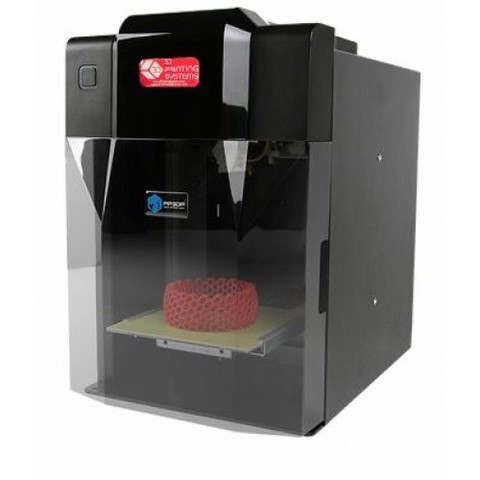
-
Desktop SLA 3 D The printer is ideal for making small, about the size of an adult's fist, injection molded parts. Moreover, such a printer can be purchased at an affordable price.
-
Industrial SLA 3 D printers can produce very large parts (up to 1500 x 750 x 500 mm)
Well, that's all we have! Thank you for being with us, see you soon. Further it will be more interesting!
You can purchase the 3D printers mentioned in the article , consumables for them, ask your question, or track the order, you can
-
By phone: 8(800)775-86-69
-
E-mail: [email protected]
-
Or on our website: https://3dtool.ru/
Don't forget to subscribe to our YouTube channel:
And to our groups in social networks:
In contact with
Differences of SLA/DLP/LCD printers, printing examples, application
Home / Blog / Useful / SLA/DLP/LCD 3D printing technology and its application
Photopolymer printing is usually associated with delicate, miniature products. After all, it is photopolymer printers that come to the rescue if you need to make a small but detailed model.
After all, it is photopolymer printers that come to the rescue if you need to make a small but detailed model.
Currently, photopolymer printers can work on one of three technologies - SLA, DLP or LCD. Each of the technologies has its own advantages and disadvantages.
In order not to make a mistake with the choice of model, you need to understand which technology is suitable for printing specific products. For example, for a jeweler and a dentist, the main criterion will be accuracy, and for a person who plans to print figurines for his hobby, the quality of the surface and the not very expensive cost of consumables.
SLA
SLA is one of the first patented 3D printing technologies. It was patented in 1986 by Charles Hull. DLP and LCD are similar in basic principles to SLA, but appeared much later.
How it works
As a material for printing, SLA printers use photopolymer resins - light-sensitive polymers that harden under the influence of a certain spectrum of UV radiation.
A laser beam is used as a “hardener”, which is focused on the desired point with the help of mirrors. The beam sequentially “draws” a slice of the model. So gradually, layer by layer, the model is “grown” on the desktop.
How SLA technology works
There are two options for the location of the printed table - top and bottom.
Top table
Visually it looks like an inverted FDM machine, the model is printed upside down on such a machine. The table moves during printing from the bottom up, the laser module is located at the bottom of the machine, under the polymer bath. The bottom of the bath is usually made of silicone - it transmits UV radiation well and practically nothing sticks to it.
Top position printer model
This is the most popular desktop SLA printer solution.
Table down
The laser module is located at the top of the printer above the resin bath, and the printing table, during printing, gradually lowers down, plunging into the resin.
Industrial SLA with table bottom
This arrangement is traditionally used in industrial machines with a large print area. The only inconvenience is that the bath must always be filled with a photopolymer. And when changing the type of resin, you will have to completely drain the entire photopolymer and thoroughly wash the bath.
Pros
-
Large selection of consumables. Due to the growing popularity of photopolymer printing, many specific resins have appeared - from soft flexes to photopolymers with increased strength characteristics (for example, there is a very strong, biocompatible photopolymer for making temporary dental crowns).
Cons
-
Expensive consumables.
Printing example
Cardiac muscle printed on Formlabs Form 3
SLA printed rings
Prototype Spoon
Butterfly figurine printed on Formlabs Form 3
Technical model
Snow shovel prototype. Made on Formlabs Form 3L
Made on Formlabs Form 3L
Top SLA printers
The leader in the production of SLA printers is Formlabs. In the Formlabs lineup, you can find both small desktop models and professional machines with a large print area.
Form 3
Formlabs Form 3
Specifications:
-
XY resolution: 25 µm
-
Laser spot size: 85 µm
-
Laser power: One 250mW laser
-
Working area size: 14.5×14.5×18.5cm
-
Layer thickness: 25 – 300 µm
This printer can be compared to a small professional machine. Despite its small dimensions, it can easily cope with the most complex models.
Formlabs Form 3L
Formlabs Form 3L vs. Form 3
-
XY resolution: 25 µm
-
Laser spot size: 85 µm
-
Laser power: One 250mW laser
-
Working area size: 33.
 5×20×30cm
5×20×30cm -
Layer thickness: 25 – 300 µm
This printer allows you to print large format models or quickly produce small batches of products.
With the advent of faster and cheaper technologies, SLA printers have become less popular. They are mainly used in industries with high requirements for quality and print stability.
Free Shipping
Add to compare
Product added to compare Go
| Manufacturer | Formlabs |
Free Shipping
Add to compare
Item added to compare Go
| Manufacturer | Formlabs |
DLP
DLP technology is based on the principles of SLA, but instead of a laser, a projector is used as a source of UV radiation.
How it works
The material used is photopolymer resin, but unlike SLA, the light source is not a beam, but a DLP projector. This significantly speeded up printing, because the projector, unlike the beam, illuminates the entire layer at once.
How DLP technology works
The projector is located at the bottom of the printer, under the resin tank. The bottom of the container is usually made of a transparent, wear-resistant film. Such a film transmits UV radiation well, practically nothing sticks to it, and if it breaks, it can be easily replaced.
Pros
Cons
-
Parasitic light is possible. Exposure of the entire layer at a time can cause parasitic illumination of the resin.
-
projector resource. The projector is the heart of a DLP printer. Be sure to pay attention to the resource of the projector. For example, FlashForge Hunter claims a minimum projector life of 50,000 hours. This is a lot.
Printing example
A batch of rings printed with DLP technology
Ring patterns printed on FlashForge Hunter
Props for miniatures 28 mm
Jaw model made on FlashForge Hunter
Best DLP Printers
FlashForge Hunter
Specifications:
-
XY Resolution: 0.
 0625mm
0625mm -
Print speed: 10mm/h
-
Light source: 405nm LED
-
Working area size: 120x67.5x150 mm
-
Layer thickness: 0.025-0.05mm
FlashForge is renowned for the quality of its printers. Hunter is no exception. It turned out to be a good “workhorse” capable of solving a variety of tasks.
DLP technology is used less and less. It is being stubbornly replaced by more affordable 3D printers based on LCD technology.
LCD
LCD technology is the youngest among photopolymer printers. Initially, LCD appeared as a more affordable analogue of DLP technology, suitable for home use.
The first LCD printers had a number of unpleasant children's sores (uneven illumination of the working area, etc.), which over time were resolved or compensated. With the development of technology, in addition to models for home use, devices have appeared that are not inferior in accuracy to DLP and can be used for production tasks.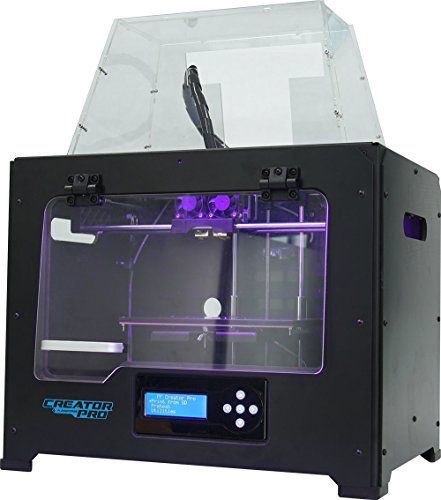
How it works
The technology almost completely copies DLP, only LEDs are used instead of a projector. Under the bath is an LCD display (similar to the display of a smartphone or tablet), which dims in some places, allowing light to pass through only in the right places.
How LCD technology works
Since the module with the screen and LEDs is located at the bottom of the printer, the bottom of the resin tank is transparent. As with DLP, transparent film is usually used.
Pros
Cons
-
Less accurate. Budget models are good for printing miniatures or figurines, but their accuracy may not be enough for, for example, jewelry.
-
The print quality may not be the same over the entire printable area. Since an array of LEDs is used as the UV source rather than a single light source, the work area may be illuminated unevenly. This problem can be solved programmatically or physically.
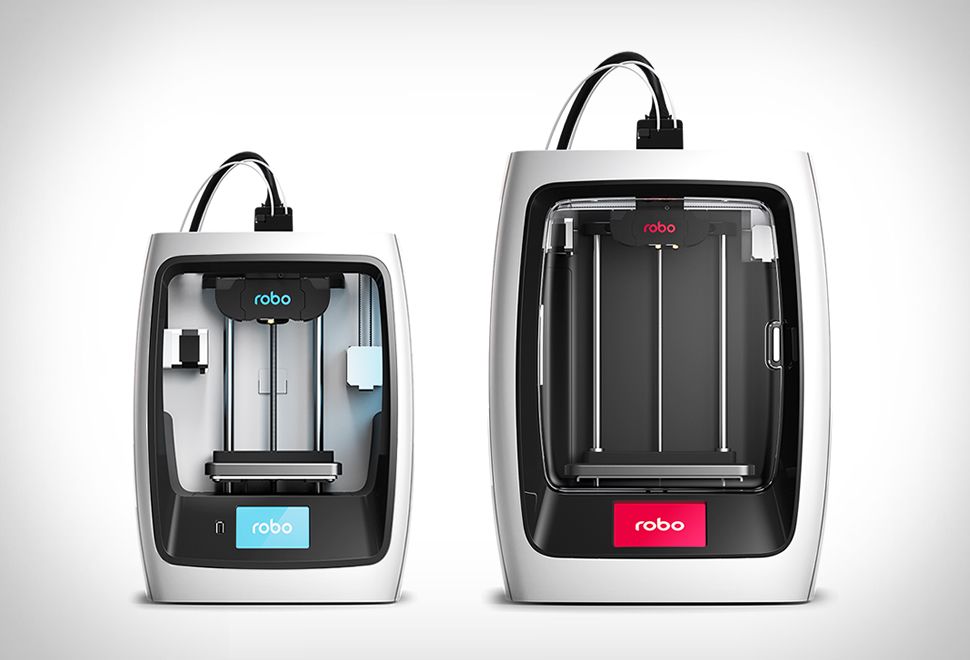
Printing example
Small miniature made with Anycubic Photon Mono
Troll printed on LCD machine
Model switchgear busbars made of soft polymer
Castle model made on Phrozen Sonic Mini 4K
Figurine made with Anycubic Photon Zero
Troll printed on LCD printer
Best LCD Printers
Anycubic Photon Zero
Anycubic Photon Zero
Specifications:
-
LCD display resolution: 854x480 px
-
XY Positioning Accuracy: 0.1155mm
-
UV wavelength: 405 nm
-
Working area size: 97x54x150 mm
-
Layer thickness: 0.
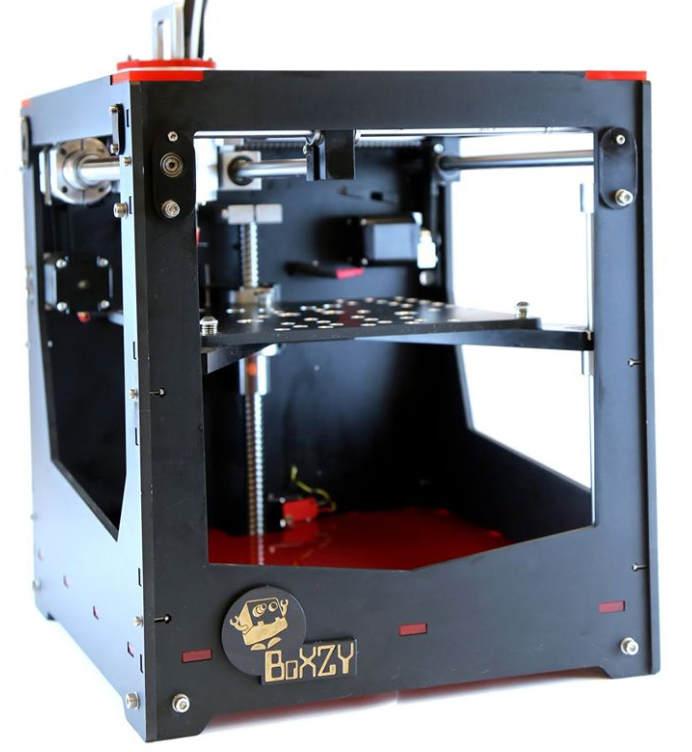 01-0.2mm
01-0.2mm
Budget model focused on home use. Good for home use.
Anycubic Photon Mono
Specifications:
-
LCD display resolution: 2560x1620 (2K)
-
XY Positioning Accuracy: 0.051mm
-
UV wavelength: 405 nm
-
Working area size: 130x80x165 mm
-
Layer thickness: 0.01-0.15mm
Anycubic Photon Mono is already a more serious device. Thanks to the LCD display of higher resolution, it was possible to increase the accuracy and quality of the finished models.
Phrozen Sonic Mini 4K
Phrozen Sonic Mini 4K
Specifications:
-
LCD resolution: 6.1" 4K Mono LCD
-
XY positioning accuracy: 35 microns
-
UV wavelength: 405 nm
-
Working area size: 134x75x130 mm
-
Layer thickness: 0.
 01-0.30mm
01-0.30mm
Mono LCD matrix, with high resolution, allows you to print very quickly and accurately.
Wanhao GR1
Specifications:
-
LCD resolution: 6.3" 2K HD
-
XY Positioning Accuracy: 0.055mm
-
UV wavelength: 405-410nm
-
Working area size: 140x78x200 mm
-
Layer thickness: 35-100 microns
The larger working area allows you to make more models at once, and a special UV-LED matrix ensures uniform illumination.
LCD printers are successfully capturing the market by displacing more expensive DLP and SLA printers. This of course contributes to their availability and a wide variety of models.
Free shipping
Add to compare
Product added to compare Go
| Manufacturer | Anycubic |
Free Shipping
Add to compare
Item added to compare Go
| Manufacturer | Phrozen |
Free Shipping
Add to compare
Item added to compare Go
| Manufacturer | Anycubic |
Free Shipping
Add to compare
Item added to compare Go
| Manufacturer | Wanhao |
Application
Dentistry
Precision is very important in dentistry. A slight distortion of even 0.1 mm can make the painstaking work of making a crown or prosthesis useless.
A slight distortion of even 0.1 mm can make the painstaking work of making a crown or prosthesis useless.
Jaw model
3D printed aligner
In addition to the accuracy of the printer, the material chosen also plays an important role. It is necessary to use special resins with a small percentage of shrinkage.
Jewelery
The full potential of photopolymer printers is revealed in the jewelry industry. In addition to precision, detail and perfect surface quality are very important.
Burnout resin ring
From model to finished product
Previously, such products had to be very painstakingly cut by hand or made from wax on high-precision CNC machines. Now it is enough to make a digital model and, with the help of a printer and burnt resin, quickly produce the required number of products ready for casting.
Prototyping
Printing prototypes, making master models, etc.
Helmet and other photopolymer prototypes
Prototype housings
FDM technology is not suitable for everything. Sometimes you need to quickly make a model of a future product with a smooth surface, professional photopolymer printers can easily cope with this task.
Hobby
Affordable photopolymer printers have become a great help for miniature lovers. It is much easier to model and print a 28 mm action figure of your favorite hero than to make it by hand for a long time and painstakingly.
Soviet motorcyclist in 28mm scale
“Spare parts” for miniature 28mm
And large decorative figurines are more accurate compared to FDM printing. After the LCD printer, you do not have to sand the model for a long time to smooth out the layers.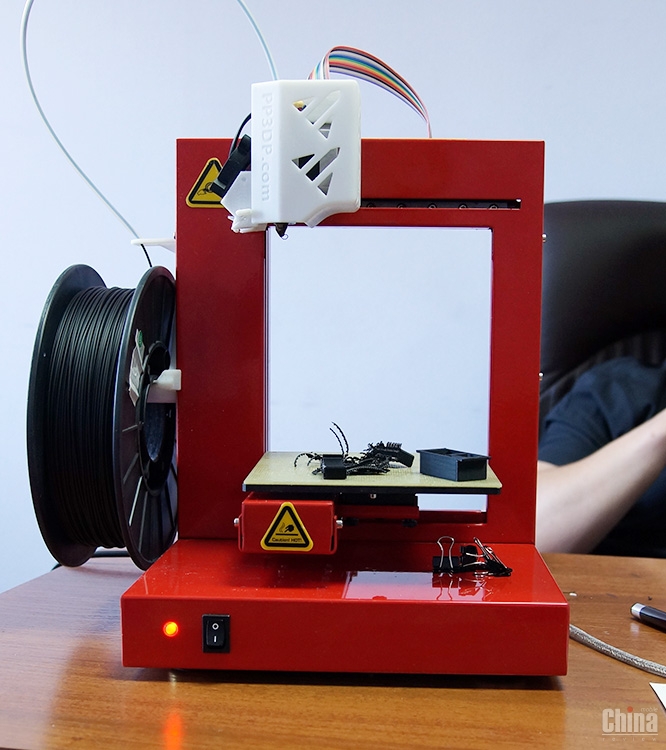
bust of a girl
Modeling
For large and sketchy layouts, FDM printers can be used, but their accuracy is not enough for making small parts. Having a 3D model, you can quickly make a very accurate and detailed layout of a building or an entire block.
Model of the statue of V.I. Lenina
Printed and painted building layout
Summary
Despite all the advantages of photopolymer printers, there are small nuances that are common to all technologies.
Washing the model. After printing, the model must be washed from resin residues. The best way is an ultrasonic bath with alcohol, sometimes you can get by with a glass of isopropyl alcohol and a brush.
“Illumination” in the UV chamber. After rinsing, the model must be “additionally illuminated” in a UV chamber, otherwise the polymer will not gain the strength declared by the manufacturer.











